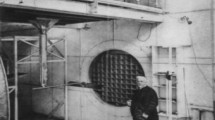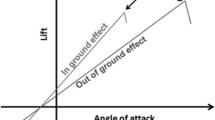Abstract
The design and construction of a wind tunnel with a vertical working section, which was used successfully for the study of untethered firebrands at their terminal velocity, is described. Two unique features in this tunnel design set it aside from previous vertical wind tunnels: the vertical working section has a divergent taper that allows a firebrand to find its terminal velocity within a velocity gradient, and the velocity of the boundary layer of the working section has been forced to a higher speed than the central zone to stop the firebrand impacting on the working section walls. These features in combination with a responsive speed control on the fan allow observation of burning firebrands throughout their viable lifetime in freefall with changing terminal velocities. This paper is intended as a synthesis of wind tunnel design and as a guide to researchers considering building similar devices to study the untethered flight characteristics of local species of firebrands.
Similar content being viewed by others
References
C.S. Tarifa, P.P. del Notario, and F.G. Moreno, “On the Flight Paths and Lifetimes of Burning Particles of Wood,” Proceedings of Tenth Symposium (International) on Combustion, 1965, pp.1021–1037.
C.S. Tarifa, P.P. del Notario, F.G. Moreno, and A.R. Villa, “Transport and Combustion of Firebrands,” Final Report of Grants FG-SP-114 and FG-SP-146, Aeronautical Institute of Madrid, 1967, 90 pp.
A. Muraszew, J.B. Fedele, and W.C. Kuby, “Firebrand Investigation,” Aerospace Report No. ATR-75(7470)-1, Vehicle Engineering Division, The Aerospace Corporation, El Segundo, CA, 1975, 104 pp.
A. Muraszew, J.B. Fedele, and W.C. Kuby, “Investigation of Fire Whirls and Firebrands,” Aerospace Report No.A TR-76(7509)-1, Vehicle Engineering Division, The Aerospace Corporation, El Segundo, CA, 1976, 155 pp.
P.F. Ellis, “The Aerodynamic and Combustion Characteristics of Eucalypt Bark—A Firebrand Study,” Ph.D. thesis, Australian National University, Canberra, 2000, 187 pp.
I.K. Knight, P.F. Ellis, and A.L. Sullivan, “A Vertical Wind Tunnel for Investigating the Combustion Behaviour of Firebrands at Their Terminal Velocity,” CSIRO Forestry and Forest Products Technical Report No.133, Canberra, Australia.
Fantech Pty Ltd., Fans by Fantech: A Manual of Selection Data and Recommended Practice. Melbourne, Australia: The Craftsman Press, 1993, unpaginated.
R.D. Mentah, “Aspects of the Design and Performance of Blower Tunnel Components,” Ph.D. thesis, London University, Boston Spa, England, 1994.
P. Bradshaw, and R.C. Parkhurst, “The Design of Low Speed Wind Tunnels,” Aero Report 1039, National Physical Laboratory, Teddington, England, 1962, 64 pp.
G.G. Borger, “The Optimisation of Wind Tunnel Contractions for the Subsonic Range,” Ph.D. thesis, Ruhr University, 1973. [NASA (English) Translation TT-F-16899, NASA, Washington DC, 1976, 188 pp.]
Author information
Authors and Affiliations
Rights and permissions
About this article
Cite this article
Knight, I. The Design and Construction of a Vertical Wind Tunnel for the Study of Untethered Firebrands in Flight. Fire Technology 37, 87–100 (2001). https://doi.org/10.1023/A:1011605719943
Issue Date:
DOI: https://doi.org/10.1023/A:1011605719943




